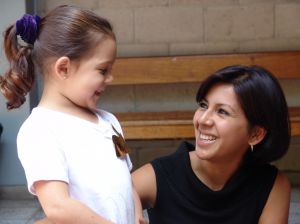 As parents and educators, we are always striving to prepare our children for the challenges they face once they “leave the nest”. Our instruction process is truly lifelong. In chatting with my elderly parents as our roles have reversed, I was struck by an interesting comment when we were discussing the recent economic turmoil and how charities and non-profits are being hurt by the downturn in charitable giving.
As parents and educators, we are always striving to prepare our children for the challenges they face once they “leave the nest”. Our instruction process is truly lifelong. In chatting with my elderly parents as our roles have reversed, I was struck by an interesting comment when we were discussing the recent economic turmoil and how charities and non-profits are being hurt by the downturn in charitable giving.
My wise parents, who also witnessed their retirement and real estate holdings drop in value commented:
“There are always those who are worse off and need our assistance. Whether we donate our time or money, we know it will benefit those in need.”
Needless to say, I was awestruck. Just moments before, the conversation was dominated by financial planning topics not necessary just 9 months prior. Even with financial concerns at the forefront, those less fortunate were included in the conversation. Thus, may we suggest considering opening a dialogue with your children and grandchildren concerning the lifelong importance of philanthropy and assisting those less fortunate.
When teaching your children about philanthropy, it is best to lead by example. Expose them to your volunteer work, and/or your monetary contributions to your religious affiliations. Show them your itemized tax return outlining “charitable giving”. Some steps to help you include your children and grandchildren include:
Make philanthropy a “family affair: Include your children in the decision making process. For example, in our local weekend newspaper there was a small article concerning charities collecting pet food to assist those who cannot afford food for their dogs and cats. Due to limited budgets, some folks have sent their pets to local shelters since they cannot afford the pet food. As a person who loves animals, the story brought a tear to my eye and also made me involve the family. The article went on to mention drop-off areas where food could be donated and how Purina had donated 50,000 pounds of food for the cause. Discussing the situation with the children, they each offered a portion of their allowance to buy dog and cat food and will then have us, their parents, purchase and drop-off the food. Instead, the children joined us at the pet-store, involved themselves in the purchase and assisting in delivering the food. Trust me, more tears were shed behind my sunglasses.
Let children choose their own cause: While children can be swayed by advertisements on television, it is a valuable tool in the learning process. While all children have seen advertisements for children’s charities and others I mention to them that there are many “local causes” in our region which need their assistance. Thus, if a child expresses interest in animal shelters, consider a visit to your local ASPCA and see if volunteer opportunities are available. Is the local children’s hospital having a “toy drive”? if so, get involved.
In the days following the attacks on 9/11, I was in the local mall and the Build-A-Bear Workshop store had a large bin out-front requesting donations of bears and other products for the children who may have lost a parent(s) during that horrific day. While we may assume our children are at times too young to understand, you may be surprised about what they comprehend. I watched children, with their parent’s assistance donate their purchases to the bin. Did the children understand? While they may not comprehend in adult terms and thus need adults to explain, they “get it” and it was a heart-warming moment during a time of anxiety and sadness.
Show the Effects of Paying It Forward: For children it may be difficult to comprehend the rewards associated with charitable giving and volunteering. Even as an adult, I have questioned the ROI or Return on Investment (I deal with numbers on a daily basis). For children, I usually suggest meeting with the local coordinator or community liaison to explain how their donation or volunteer of time assists the cause. At our local animal shelter, older children are allowed to volunteer to assist in cleaning cages, socializing the animals and taking them out for walks or playtime. Some children 1) do not see the end result and/or 2) are disturbed when an animal they have taken care of is adopted. The shelter director now asks “adoptive parent(s)” to send in a picture of their pet in their new home with the person(s) who adopted them. She mentioned “It gives children a tangible example showing the work they did assisted the animal in being placed into a loving and caring home.”.





